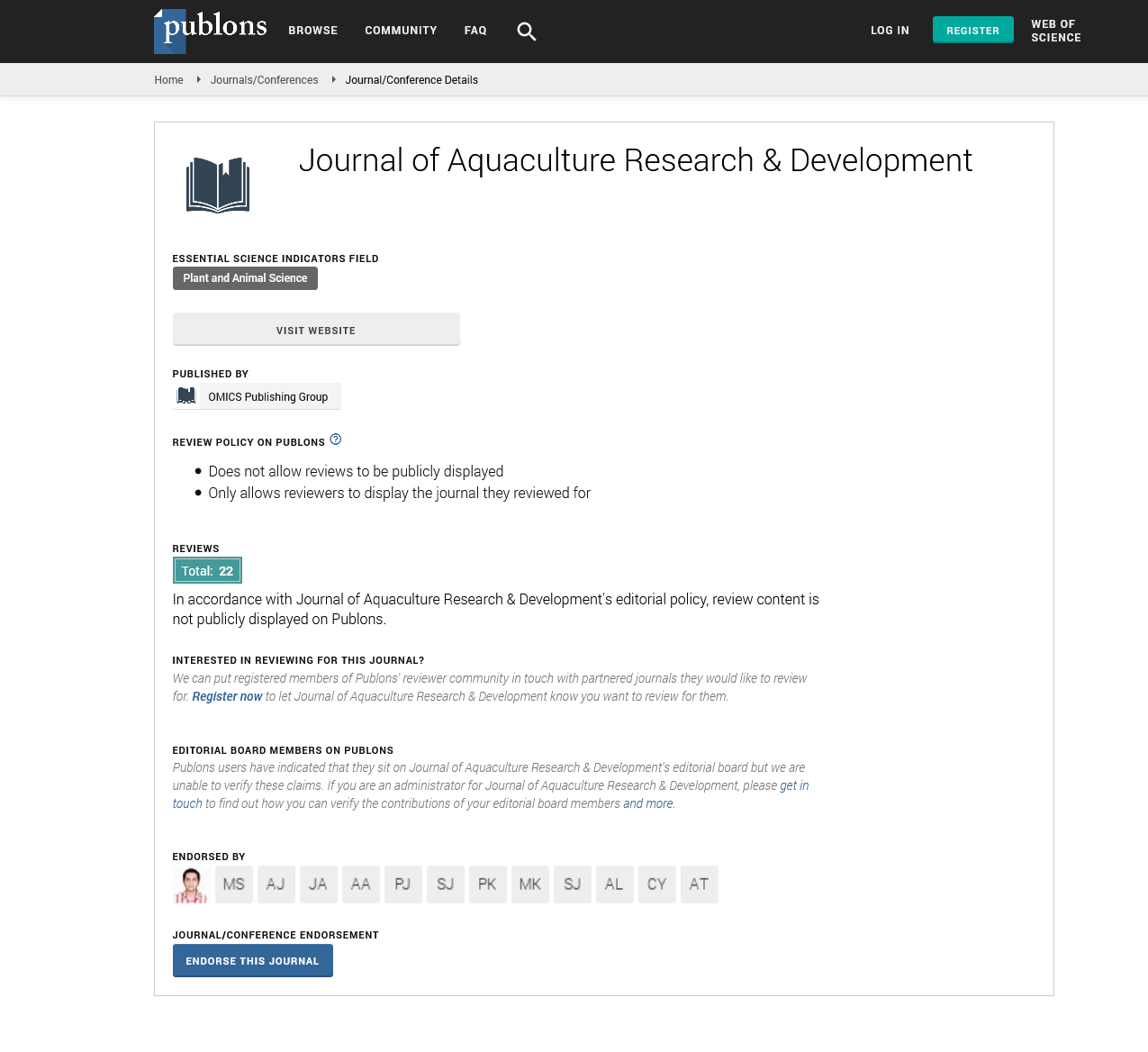Indexed In
- Online Access to Research in the Environment (OARE)
- Open J Gate
- Genamics JournalSeek
- JournalTOCs
- Scimago
- Ulrich's Periodicals Directory
- Access to Global Online Research in Agriculture (AGORA)
- Electronic Journals Library
- Centre for Agriculture and Biosciences International (CABI)
- RefSeek
- Directory of Research Journal Indexing (DRJI)
- Hamdard University
- EBSCO A-Z
- OCLC- WorldCat
- Scholarsteer
- SWB online catalog
- Virtual Library of Biology (vifabio)
- Publons
- MIAR
- University Grants Commission
- Euro Pub
- Google Scholar
Useful Links
Share This Page
Journal Flyer

Open Access Journals
- Agri and Aquaculture
- Biochemistry
- Bioinformatics & Systems Biology
- Business & Management
- Chemistry
- Clinical Sciences
- Engineering
- Food & Nutrition
- General Science
- Genetics & Molecular Biology
- Immunology & Microbiology
- Medical Sciences
- Neuroscience & Psychology
- Nursing & Health Care
- Pharmaceutical Sciences
Perspective - (2025) Volume 16, Issue 7
Rethinking Aquatic Food Systems in Changing Environments
Liang Chen*Received: 27-Jun-2025, Manuscript No. JARD-25-30059; Editor assigned: 30-Jun-2025, Pre QC No. JARD-25-30059 (PQ); Reviewed: 14-Jul-2025, QC No. JARD-25-30059; Revised: 21-Jul-2025, Manuscript No. JARD-25-30059 (R); Published: 28-Jul-2025, DOI: 10.35248/2155-9546.25.16.1012
Description
Aquaculture has expanded steadily in recent decades, offering consistent food supply and livelihood options across many regions. However, this growth also raises questions about environmental load, production ethics and stability under climate pressures. As water quality shifts and ecosystems evolve, the way aquatic food is produced must be reviewed. In my view, maintaining high productivity while ensuring environmental safety calls for closer integration between local knowledge, adaptive design and data-based oversight.
Traditional aquaculture methods, such as freshwater ponds or estuarine enclosures, remain relevant today. They provide a template for scaling while respecting seasonal rhythms and species behaviour. However, many farms today use intensive systems that require constant feeding, aeration and health monitoring. The risk here is that natural processes are replaced by artificial inputs, which can lead to imbalances. When waste build up exceeds treatment capacity, nearby ecosystems are affected. High mortality events, harmful algal blooms and resistance to treatments may follow.
Increased use of feeds containing fish-based proteins also presents a dilemma. While these feeds deliver fast growth, they rely on ocean harvests elsewhere, shifting ecological costs from farm to sea. Substituting plant or insect sources is possible, but not without trade-offs in digestibility, cost and feed conversion. From my standpoint, relying too heavily on one type of feed or input makes aquaculture less resilient to supply changes.
Disease is another concern. Whether from parasites, viruses, or bacterial infections, densely stocked systems create ideal conditions for rapid spread. Solutions like vaccination, improved hygiene and selective breeding are useful but not absolute. Once an outbreak starts, containment becomes difficult. The stress from temperature changes, poor water, or low oxygen can weaken immunity even in otherwise healthy animals. For this reason, it is important to support preventive design systems that minimize crowding, maintain constant water flow and ensure oxygen stability.
The location of aquaculture farms also matters. Installing them in shallow coastal waters or sensitive river zones can disrupt wild fish migration or reproduction. Land-based systems reduce these effects but often need high energy for pumps and water treatment. Balancing energy use and ecological disruption remains a major challenge. In my opinion, zoning regulations should be updated to reflect both species needs and ecosystem carrying capacity.
Farmers need more reliable support when it comes to weather adaptation. Changes in rainfall, salinity, or temperature affect everything from feeding schedules to disease patterns. Many smaller farms cannot afford modern sensors or automation tools. Governments or cooperatives can step in to supply shared resources, helping smaller producers stay competitive without excessive risk. Data from simple devices oxygen meters, temperature logs, feed monitors can help reduce overfeeding or early mortality.
Another overlooked topic is the handling and transport of live seafood. Poor conditions during transfer can lead to stress, injury and spoilage. Mortality during transport is often high and this waste reduces both income and food security. More humane and efficient logistics systems are needed, including better tank design, temperature control and reduced handling times.
Consumers also play a role in shaping responsible aquaculture. If buyers demand lower prices above all else, producers may cut corners on feed, space and waste treatment. But with better public awareness, more people are willing to pay modest premiums for seafood raised with lower environmental impact. Third-party certification helps, but only when trust in those labels exists. Clear, truthful communication from producers helps build that trust. Looking ahead, aquaculture remains a dependable part of the food system. Yet its long-term success depends not only on scaling production, but on maintaining environmental and social balance. When production systems are managed with a wider view one that includes ecosystems, local livelihoods and animal welfare the sector can thrive without heavy cost to surrounding waters. In this way, aquaculture becomes a reliable food source, one that works with nature instead of against it.
Citation: Chen L (2025). Rethinking Aquatic Food Systems in Changing Environments. J Aquac Res Dev. 16:1012.
Copyright: © 2025 Chen L. This is an open access article distributed under the terms of the Creative Commons Attribution License, which permits unrestricted use, distribution, and reproduction in any medium, provided the original author and source are credited.

